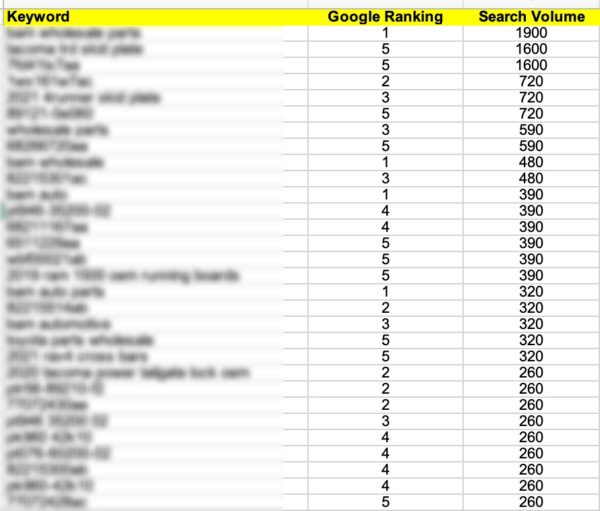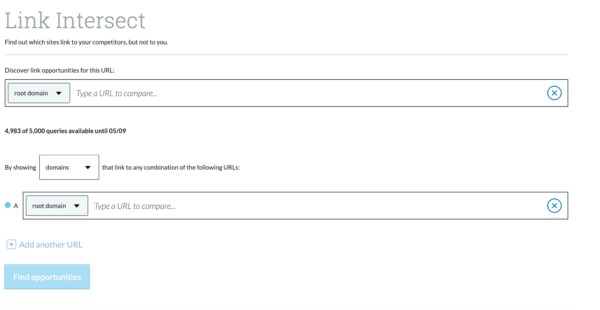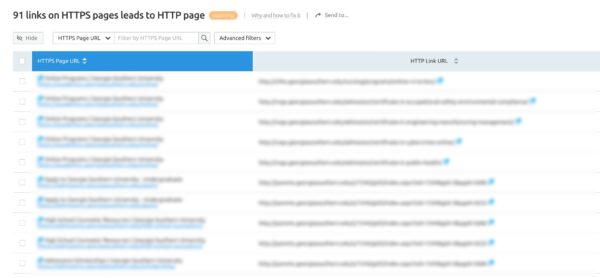 Imagine if Google created a website tool – SEO in Plain Sight.
Imagine if Google created a website tool – SEO in Plain Sight.
It lets you easily create, track, and adapt your SEO plan so you can:
- Know precisely why your rankings dropped even though they were doing well yesterday.
- Learn exactly what to do SEO-wise with any page on your website.
- Discover what you should do when adding new content.
OK, SEO in Plain Sight will never see the light of day from Google. Instead, we must rely on third-party tools (and Google Search Console) to get insights to make our next moves.
To support your SEO plan, I’ve created a quick-hit list of 11 things you can do. Some will seem familiar – make sure you don’t overlook them. Others will be fresh and easy to try (or use repeatedly). Some may only be effective if you can overcome challenges that arise with disparate teams.
This quick-hit list will help you troubleshoot and execute a successful #SEO plan, says @mikeonlinecoach via @CMIContent. Click To Tweet
All these tips should fall within any SEO framework.
1. Don’t spend too much time fixing what you can’t
If organic traffic slips a great deal, don’t fret over the problematic website page. Maybe it once had 25 keyword phrases in the top 10 on Google. Now it has 15. You probably have a decent page title, header, and content. Something else happened – likely an algorithm shift or fierce competition moving ahead of you.
Tinkering with the page may have a nominal impact. If you try anything, consider a slight header change (add or delete a word). Headers still influence rankings.
2. Expand your SEO plan
Look at your organic landing pages for your finite keyword list. Survey the top 250 pages and correlate them with rankings. For example, I often use Semrush to comb through keyword data to see whether there are some I should pursue. Google Search Console also has useful keyword data. Google Analytics has good information about landing pages, but I explore the keywords that might be driving the traffic and optimize pages to get even more visitors.
You may find an overlooked long-tail keyword phrase that is searched less often. You may have pages you never fully optimized. Attack scores of those pages to improve their rankings and be sure to link to them from your top-performing pages. (Internal linking always helps with SEO.)
For example, this website has over 30 top five rankings on Google.

That’s great, but the company also has over 25 lower rankings within striking distance. Though the search volume hovers around 50, they’re highly relevant keyword phrases worth targeting.

HANDPICKED RELATED CONTENT:
3. Refresh pages
Old blog articles can rank well if the content is still perceived as a great resource in your industry. But what about those old articles for which more authoritative websites provide great information?
Update your article to compete with the higher-ranking sites. I don’t mean rewording two sentences. Add a new section with several paragraphs. Feature fresh tips while removing outdated ideas. Summarize current studies or add several resources (tools, videos, useful guides, books, quotes from top experts, etc.)
Refresh old #content to boost its #SEO. Add a new section with several paragraphs. Add fresh tips and remove outdated ideas, says @mikeonlinecoach via @CMIContent. Click To Tweet
HANDPICKED RELATED CONTENT:
4. Republish content
Sometimes your website content may fall out of favor just because it’s old. Maybe your content used to stand out, but now many other websites offer relevant (and current) content along with powerful backlinks. If you’ve lost considerable traffic, make several updates and republish the product page or article. It may be a good time to update the URL as well (with suitable keywords). Just be sure to use a 301 redirect. If the page ranked well, keep the page title and header for a few months to evaluate the impact on rankings. Age, not your SEO basics, may have affected rankings.
Try this method on a few older blog posts or pages to decide whether it works for your business.
HANDPICKED RELATED CONTENT:
5. Repair broken links
Yes, broken links are a common part of SEO life. It happens. But you should be vigilant about fixing internal links on your pages to please users and search engines. Every fixed link won’t lead to a spike in natural traffic, but clean websites send the right signals to search engines. Some of those links also may be to popular pages, which will be an added boost.
Fixing broken links won’t spike traffic from search, but clean websites send the right signals to search engines, says @mikeonlinecoach via @CMIContent. #SEO Click To Tweet
6. Find new linking opportunities
Speaking of links, you may find the backlinks from other websites are no longer working because those sites have made updates to their content. Since backlinks are a key ranking factor, create a priority list and ask for them to link to your content in another way. It might be helpful to identify pages on their site where your content may be most relevant. Your website analytics will have referring website data to analyze.
To discover gained and lost backlinks, check your referring website traffic in your website analytics or insert your domain into this Moz tool:

You also should build new links proactively. I have used tools like Ahrefs and Moz to find potential sites that may have linked to my competitors’ content. I also use the Link Intersect feature of Moz’s Link Explorer to find out what links other websites attracted that my SEO clients have not yet secured.

7. Fix SEO technical messes
Companies make website changes and don’t always survey the damage. Sometimes they end up having https (secure) pages pointing to http (non-secure pages). Semrush has a website audit tool that quickly identifies scores of problems like that.

8. Feature evergreen content in your SEO plan
With your keyword strategy in mind, you should roll out new content that will last. Evergreen content can include:
9. Publish video transcripts
Sure, you can do little things like including your website link on YouTube video descriptions to help your SEO.
But what about letting your video affect your website SEO? Add a transcript below the video. You might rank for more keywords and help improve your natural search engine traffic.
10. Unearth hidden gems
What content do you have that’s never seen the light of day? Pore through your business plans, marketing plans, slide decks, sales pitches, webinars, demos, and more. One of my clients, a health benefits consultant, had a 60-page client document. They released nearly one-fourth of the content to their site. The new website content increased rankings, natural traffic, and leads. The payoff can be significant when you publish valuable content with relevant keywords.
11. Open the gates
Why not share some of the gated content that you’re concealing? It can get crawled by search engines and support website traffic. Your content will connect with consumers who then call or fill out other contact forms and are more primed than those who didn’t see it first.
Maybe you’ve had some gated content like how-to guides and white papers that haven’t attracted many leads. That content may be successful for SEO if you remove the barriers.
Remove the barriers on your #content that hasn’t attracted many leads. It may be more successful ungated for #SEO, says @mikeonlinecoach via @CMIContent. Click To Tweet
Get your SEO plan righted
It can be easy to execute your SEO plan without giving it a second thought. But that doesn’t mean you should or that your SEO plan will keep humming along. Survey your keyword, content, technical, and backlinks. By executing these 11 tips, your site will get the natural search engine traffic it deserves.
All tools mentioned in this article are suggested by the author. Feel free to include additional tools in the comments (from your company or ones that you have used).
Cover image by Joseph Kalinowski/Content Marketing Institute
